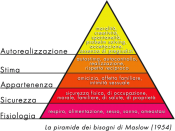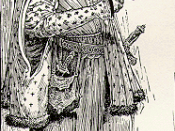MN1007-Management and Organisational Behaviour
Assignment Number 2
Robin Hood
- Identification of the problems and rationale for their prioritisation
- Use of appropriate theoretical models
- Evidence of imagination in identifying the options available
- Development of a realistic strategy and implementation proposal
Robin Hood's insurrection began as a personal crusade against the High Sheriff of Nottingham and his administration. His band of men was a small disciplined group united against the Sheriff. However, Robin changed his recruiting tactics believing that strength was in number. This hierarchy change brought about many problems which hindered Robin's success of his campaign.
The small disciplined group of men could fall under the definition by Schein of a formal organisation "the planned co-ordination of the activities of a number of people for the achievement of some common, explicit purpose or goal, through the division of labour and function, and through a hierarchy of authority and responsibility."
(Mullins, 2003)
It was easier for Robin to oversee the management of a small group of men as he personally recruited, the men he knew their strengths and weaknesses.
As the success of Robin Hood's campaign grew more men joined him and soon Robin took all who came to him without asking many questions. This created many problems both internally and externally.
Internally, as human resources increased the number of lieutenants he would need to effectively manage the group would need to be increased. Groups need to be carefully managed as problems could arise. For example, informal hierarchies and leaders might start to appear which could slowly break down the chain of command. The task of discipline was delegated to Little John, but as the band grew this would become harder to enforce. Also, trust and loyalty will become an issue, especially for a group of outlaws. Robin...


